Gunma’s enchanting onsen getaway – long a fan favorite for hot spring lovers in Japan – gains popularity among the foreign community in Japan
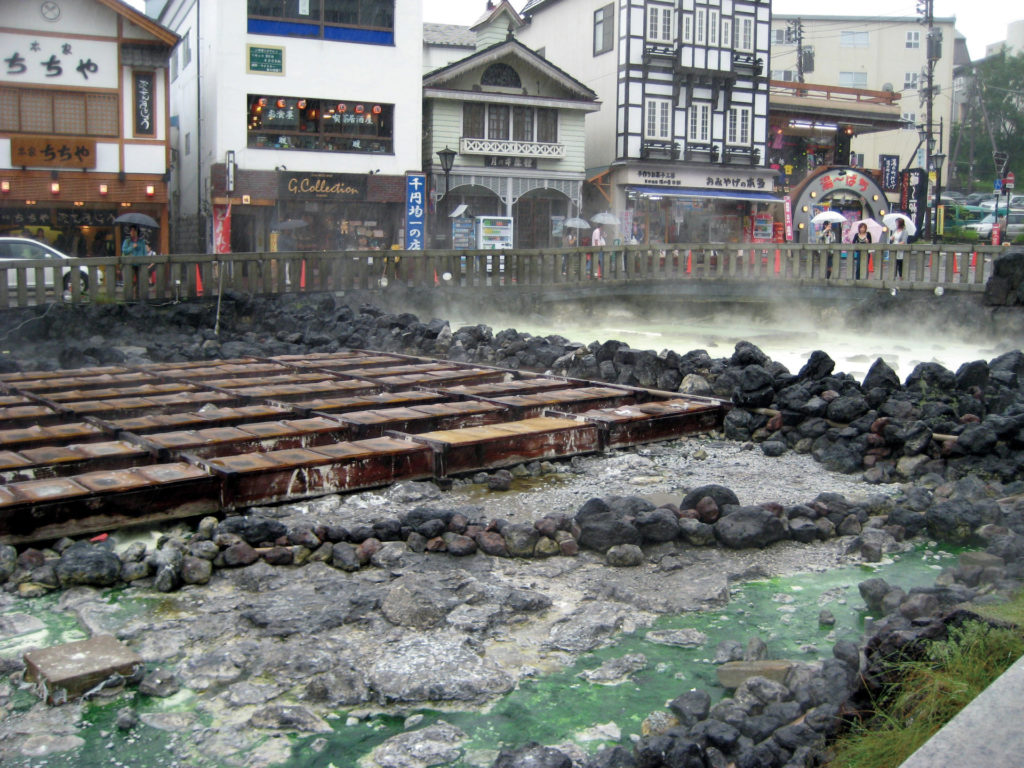
Nestled deep in the northwest corner of Gunma Prefecture among the 2,000-meter peaks and valleys of the Mikuni Mountains and surrounding Joshinetsu National Park, Kusatsu Onsen is a picturesque township that offers a culture as old as Japan itself and a history similar to few other tourist destinations.
Japan’s first, eighth and tenth shoguns visited Kusatsu Onsen and occasionally had Kusatsu water shipped to Edo Castle for bathing. Today monuments still stand testament to these historical figures and local folklore speaks of discoveries by high priests and mythological heroes.
Despite ranking number one as both “Favorite Onsen Destination” and “Most Desired Onsen Destination” among Japanese people in a 2000 survey by the Nihon Onsen Association, Kusatsu Onsen has remained relatively unknown to the foreign community in Japan…until now.
THEN & NOW
Kusatsu Onsen: Then
Owing its myriad hot springs—and occasionally daunting earthquakes—to its tectonic location, the Japanese practice of bathing together in geothermal spring water (hadaka no tsukiai) has been a way of bearing one’s soul and transcending social boundaries for centuries.
“In daily conversation, Japanese people don’t often speak loudly or directly,” says Eiji Nagai, Chief Assistant for the Creation of Tourism in Kusatsu’s Town Hall. “But if we are naked together in an onsen, people are free to say whatever they want. There are no secrets in the bath.”
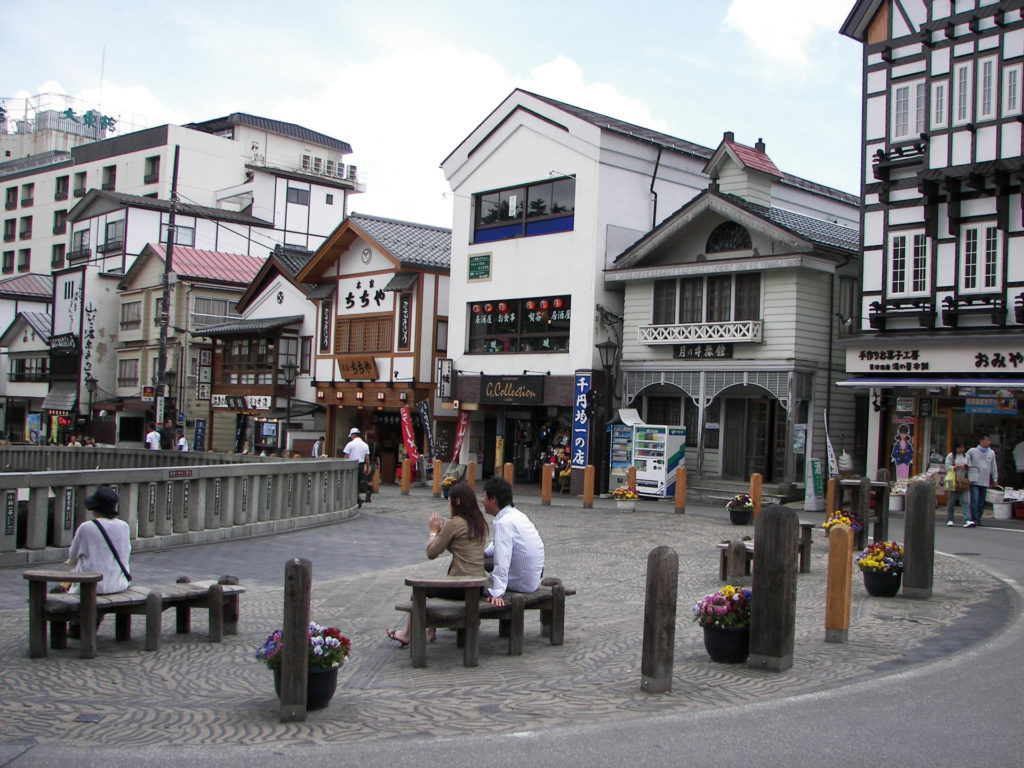
Although Kusatsu has been frequented by Japanese for more than 1,000 years, it wasn’t until Dr. Erwin von Baelz, a visiting German physician and university lecturer, researched and presented Kusatsu Onsen’s unique chemical makeup to the medical community in 1876, that it became known as “the world’s finest spa and health resort.” Soon after, people began to take notice of this tiny mountain hamlet, and Dr. Baelz became an icon in Kusatsu’s history.
Dr. Baelz discovered Kusatsu’s many hot springs are fueled by a caldera lake, called yugama, on the peak of nearby Mount Shirane.
The lake filters the water through the mountain to the yubatake, or “field of water,” located in the center of town, where more than 5,000 liters of water—at 55ºC (131ºF)—surge every minute; the highest volume and temperature of any onsen in Japan. The sheer quantity and temperature of Kusatsu Onsen make it unique according to Kohshi Abe, Secretary General of Kusatsu Onsen Tourism Agency.
“Many onsen towns run out of water, or the natural water becomes cool, so town officials pipe in water from outside to moderate the temperature artificially,” he says. “In Kusatsu, both temperature and volume are totally natural.”
The water in Kusatsu Onsen contains trace levels of iron, aluminum and arsenic as well as pH-levels between 1.7 and 2.1, which makes it the world’s most acidic water. Tour guides like to joke that a ¥1 coin placed in the onsen will disappear within a week. In fact, the geothermal water in Kusatsu Onsen has been shown to corrode a 15-centimeter nail to the thinness of a needle in just 12 days.
While this concoction of chemicals sounds daunting, the acidic water is perfectly harmless to humans but does play havoc with harmful germs and diseases. In fact, Dr. Baelz was so impressed by Kusatsu Onsen water, he once remarked, “Spring water of such high quality can completely cure any disease,” and while that claim is a bold one, ancient Kusatsu folk songs extol the water’s ability to cure anything short of lovesickness.
Kusatsu Onsen: Now
The yubatake, from which a multitude of homes, shops and ryokan heat their premises, boil their water and draw their quantity of geothermal water, is geographically the center of the township but is also a symbolic centerpiece. Around it, colleagues gather to enjoy the cool, fresh mountain air as they gaze upon the nearby mountains.
Visitors join with locals to soak their feet in one of the community’s hundred-or-so public springs; couples enjoy moonlit strolls amid the peculiar blue-green glow of the spring water, while young boys chase little girls who scream and giggle despite their elders’ protests.
The yubatake is the place where the scalding geothermal water is cooled via seven wooden aqueducts before being distributed to the townspeople. Upon arrival in most onsen, it is then cooled by an ancient tradition called yumomi, which is the rhythmic practice of stirring the water while singing traditional songs.
Yumomi is paramount in the process as alternative methods of cooling the spring water—including adding cold tap water—decrease its therapeutic efficacy.
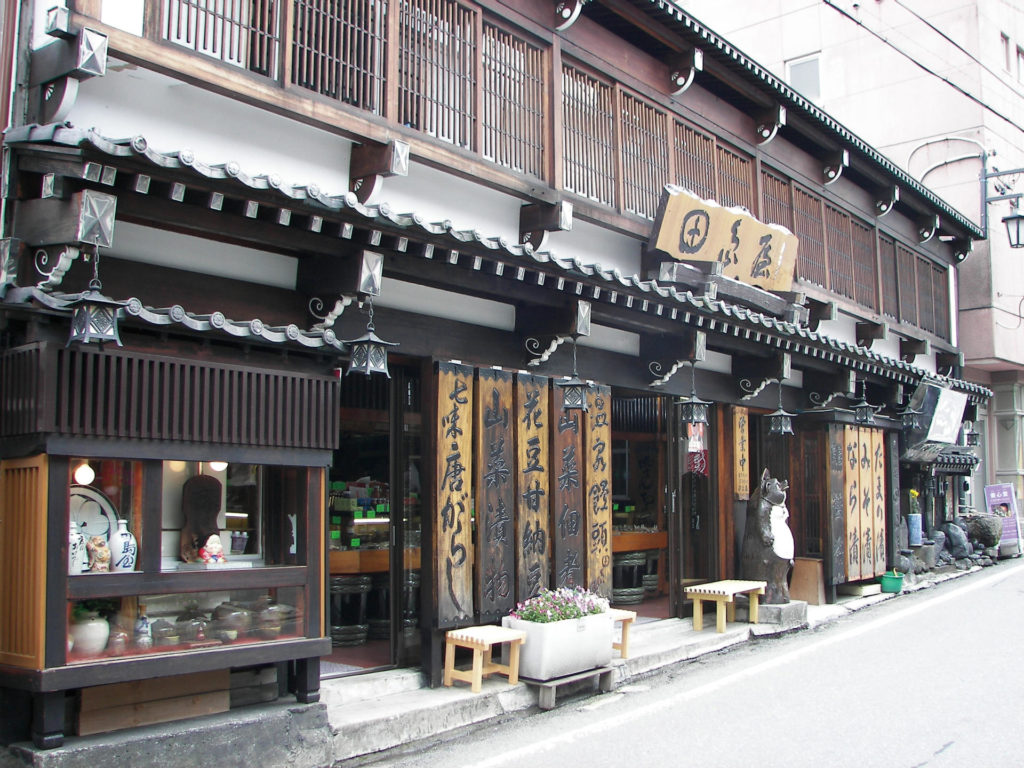
Ideally, after the slow filtering and the yumomi processes have been completed, the water becomes bearable enough for patrons to enjoy. But, everything begins at the yubatake, which for a thousand years has continued pumping the lifeblood of the township. The yubatake is encircled by shrines, onsen, sento (traditional public baths), shops and restaurants, some of which continue to pay homage to their German ancestry in name and cuisine. From the yubatake, small streets branch off like arteries, providing all manner of culinary delights and souvenirs for tourists.
For each of the last three years, Kusatsu Onsen has received about 12,000 visitors annually and, although officials from the local government would like to see that number increase to about 30,000, Kusatsu is still far from becoming the next historical destination ruined by crowds and commercialism.
“Kusatsu is protected from a tourist explosion because it is surrounded on three sides by national parks and mountains. For this reason, Kusatsu cannot really grow,” says Abe. “We are putting money into developing the town’s infrastructure, but there are no plans to expand the size of Kusatsu township.”
Recreation
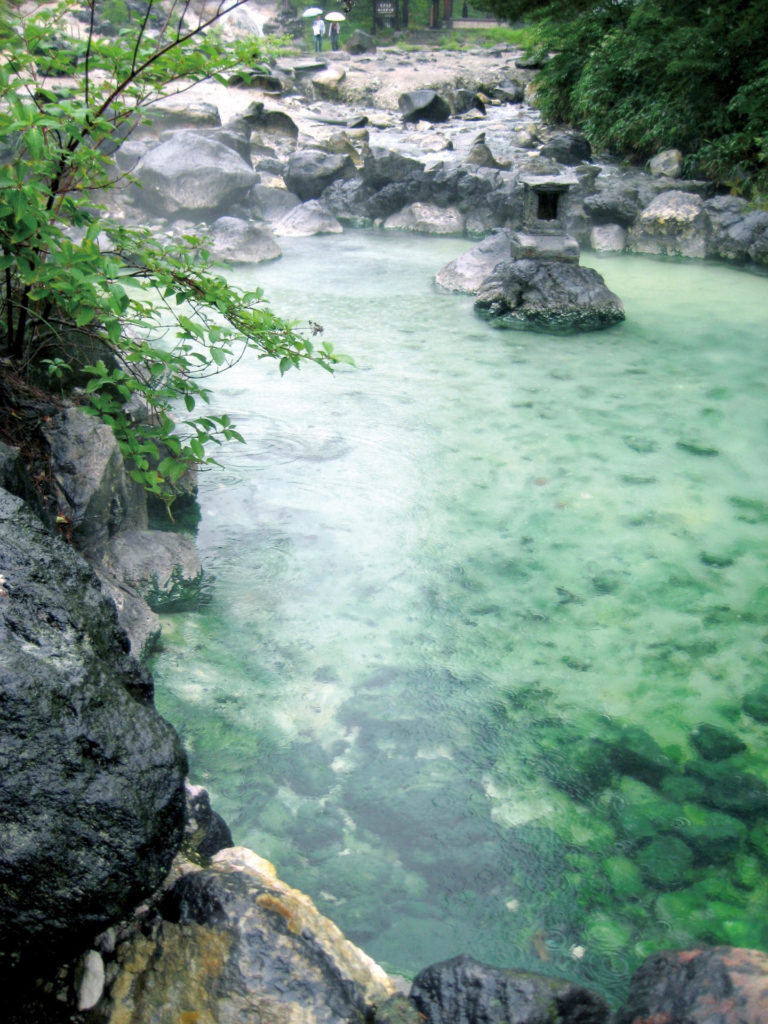
Perched high in the mountains and adjacent to the Joshinetsu National Park, Kusatsu is home to scores of outdoor recreation and adventure activities. Kusatsu Highland Golf Course (www.kusatsugolf.com) and Kusatsu Country Club (www.kusatsu-cc.com) offer breathtaking natural landscapes and courses that are challenging yet enjoyable to play.
Kusatsu Snow & Spa Resort (www.kusatsu-kokusai.com), with 2,100-meter peaks, offers skiing and snowboarding from December to April, and mountain-boarding, grass skiing, tennis and pitch-and-putt golf from May to October. Not to mention, for an additional ¥200 per day, visitors are welcome to use any of three municipal onsen facilities on the premises.
If you’re the adventurous type and are looking for an adrenaline rush while on vacation to Kusatsu, the guys at Canyons (www.canyons.jp) are more than willing to help. Offering backcountry skiing, snowboarding and snowshoeing routes far removed from the crowded slopes of other winter destinations, Canyons will rent you equipment and provide lessons and guides to ensure a wonderful and safe mountain experience.
But, if you find yourself in Kusatsu during the warmer months, Canyons has you covered with full- and half-day canyoning tours, whitewater rafting, kayaking and caving adventures.
If you’re in the mood for a relaxing stroll in summer or a challenging trek in winter, Kusatsu’s surrounding slopes are criss-crossed with 60-70 kilometers of hiking/snowshoeing trails and nature paths. Matsuo Yuda, a Forest Officer in Kusatsu, will soon introduce a therapeutic program combining forestry, hiking, meditation and onsen. The experience will include a seven-kilometer hike encircling Kusatsu, and a meditation training program allowing visitors to absorb the natural energy of the surrounding forests.
In the unlikely event all this recreation isn’t your thing, never fear. Thespa Kusatsu (www.j-league.or.jp) is the township’s Division Two professional soccer team, comprised mostly of aging Division One J. Leaguers and younger players who hold part-time hotel jobs to help pay their bills.
Thespa (pronounced “The Spa”) was founded in 1995 and play most of their matches at the nearby 10,000-seat Shikishima Stadium. The team was created largely to bring popularity to the resort township and look to their local fan base for financial support so, if you find yourself with a free afternoon, a trip to Thespa’s ground is a great way to complete the Kusatsu experience.
Kusatsu Kogen Beer is another great way to bookend the busiest of days or the laziest of afternoons. It is brewed locally, and the Kusatsu Highland Brewery is a father-son operation combining Kusatsu’s natural spring water with a secret blend of malted hops to create a lively caramel-colored lager refreshing enough for summer and rich enough for winter.
According to Emi Suzuki, Assistant Director of Jikan-yu Therapy Programs, “We create a treatment program based on the temperature of the water, length of time spent in the water and the frequency with which one goes into the water.” The philosophy behind jikan-yu can be explained simply as using the abundance of minerals in the onsen water to strengthen the body’s natural ability to fight toxins, thus creating a stronger body and a healthier person.”
Actually, explains Suzuki, “The philosophy of jikan-yu is divided into jizo-no-yu and chiyo-no-yu; the former being a type of long-term therapy for people with recurring conditions, and the latter more like a public bath experience where visitors are invited to come once or twice as a trial. “
Regardless of which jikan-yu you choose, the overall idea is to stimulate and strengthen the body rather than adding unnatural medicines or substances to it.
Rest & Relaxation
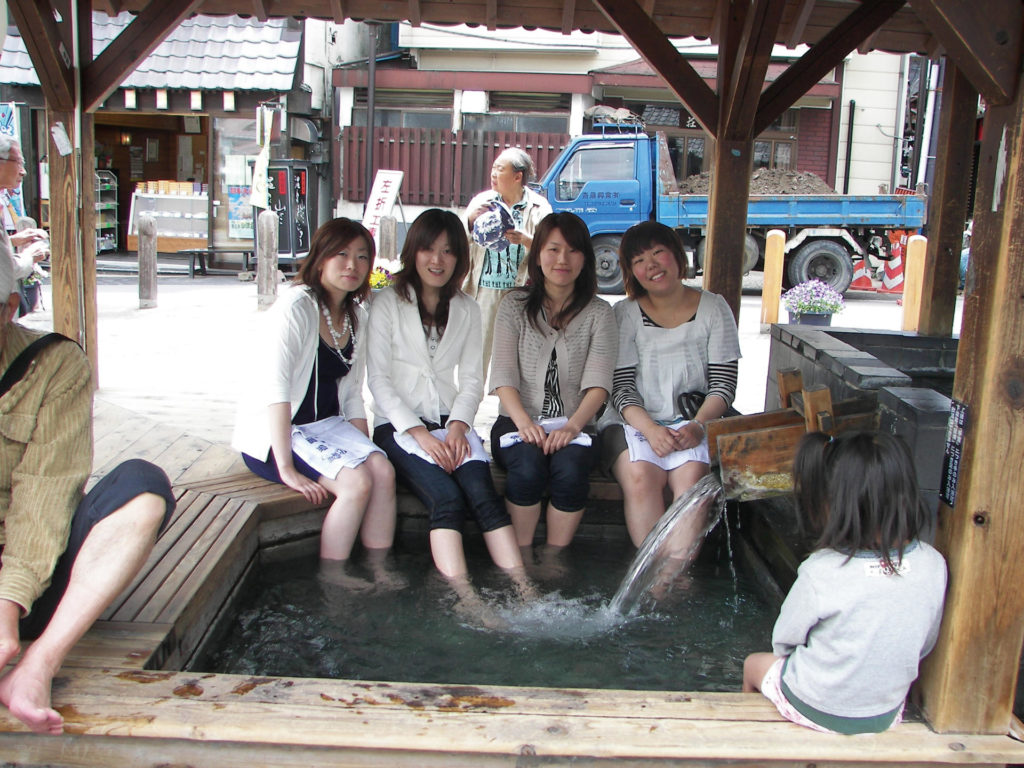
The streets in and around Kusatsu are filled with kiosks and shops offering local delicacies including onsen manju (sweet anko-filled buns), onsen tamago (eggs hard boiled in the natural spring water) and Kusatsu-grown yakitori (skewered barbecued chicken). While these are great for a snack, the real treat comes when you get out of the streets and into a proper restaurant or ryokan.
With its availability of freshly grown vegetables in the summer, edible plants and mushrooms in the fall, fresh fish from crystal-clear streams and locally brewed mineral-water sake, Kusatsu’s culinary options are tough to beat.
Two particularly noteworthy restaurants are Café ASPEN and Tenyoshi (天よし) Ramen. Café ASPEN, as suggested by its name, is a warmly lit ski lodge-style eatery that features solid oak chairs and tables and delicious cuisine that artfully fuses Japanese ingredients with traditional Italian pizza and pasta.
Tenyoshi Ramen, on the other hand, is a mom-and-pop Japanese restaurant that specializes in ramen and oversized gyoza filled with fresh vegetables and local spices.
Kusatsu offers about 130 Japanese-style ryokan, about 20 minshuku (family-run inns), about 20 pensions (small hotels) and at least another 10 large western-style hotels, all of which come in varying sizes and prices. One of which, Misekiya (三関屋) Ryokan, is a remarkable family-owned place with wonderful hospitality, a gorgeous breakfast, immaculate rooms, cable TV and private onsen, and is located just a stone’s throw from the yubatake.
Kusatsu is an enchanting mountain destination featuring the adventures and conveniences of larger, better-known destinations without the hassle of crowds, lines and commercial development. The air is fresh and clean, the people are genuine and kind and the onsen are hot, relaxing and plentiful.
Upon returning to the city, I was overcome with a sense of sadness, an immediate nostalgia. I longed for one more day among the trees and trails of Kusatsu and felt torn between telling as many people as possible about this magnificent place and keeping it a secret.
Kusatsu’s Healing Forest
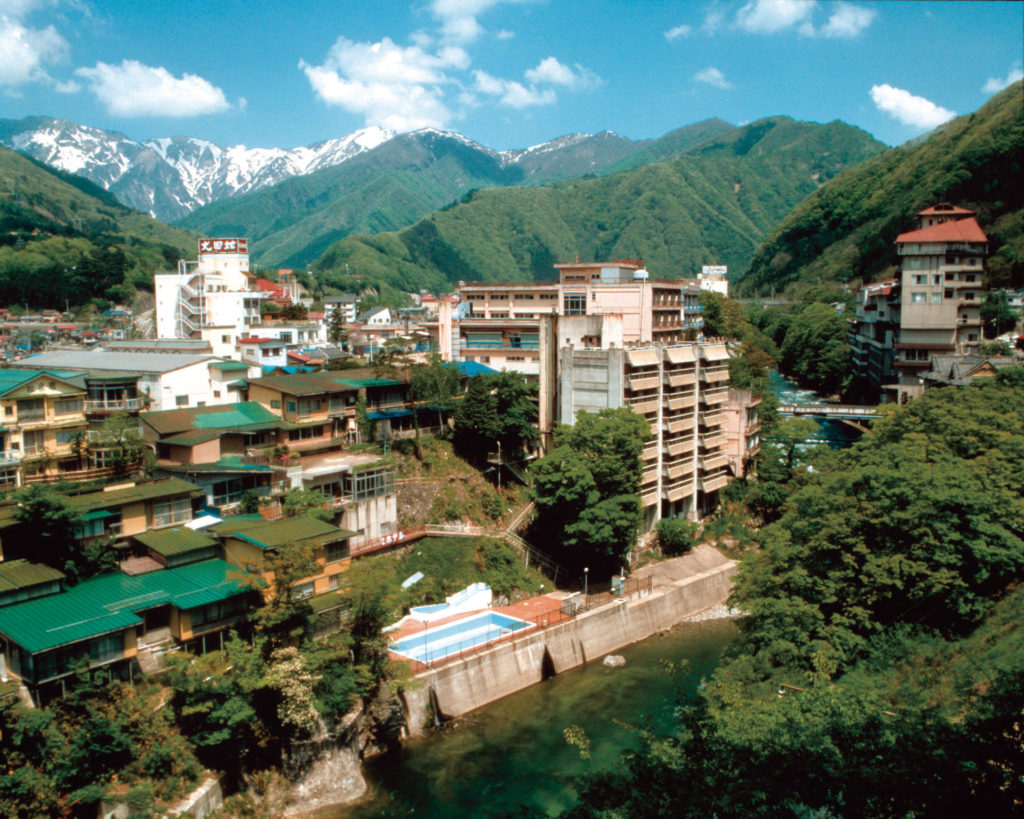
While normally talkative, Masaaki Takayama uses few words in his nature tours emphasizing use of the five senses to appreciate the changing seasons. Waterfalls, fresh green sprouts and flowers are some of the themes for spring. The night forest scent, animal sounds and starry skies during summer, while stories about the moon told by moonlight with a relaxing music stir emotions for some people as everyday stresses are released.
Multicolored trees, fallen leaves and a lesson in traditional fire-making highlight the fall tours and, in winter, he teaches hikers how to enjoy eating snow with sweet syrup and marches them blindly into the mountains on snowshoes until they’re lost, then announces, “What do we do now?”
Through the guidance of people such as Takayama, these natural experiences unconsciously attach to one’s heart, healing the spirit. He stresses sensing the forest around us. The kanji for nen (sense) can be written using the characters “now” and “heart.” “Taking care of the people and things around you is what it really means to ‘sense.’
“People have fun after a day in the forest and come back smiling,” said Mutsuo Yuda, a forest therapy instructor. Trees thousands of years old have the power to heal human beings. He tries to encourage people to use the five senses to enjoy their surroundings. Walk very slowly as you enjoy the slightly different smells of new leaves and the land as you walk. Kusatsu Yasuragi Forest is 22 hectares of National Forest and is accessible to people of all ages.
Another appealing factor of Kusatsu is the people. “In the bath, local ladies will boldly lean in and talk to a stranger such as me for no reason,” said Nanako Shimizu, a Kusatsu visitor. There is no question; Kusatsu can make you relax with its great nature and warm people at any time of the year.
Kusatsu Seasonal Highlights
By Tomoko Kodaira
Spring: Enjoy blooming rhododendron. Drive up to Mt. Shirane in the early morning and watch the thick fog suddenly disappear as you rise above the cloud line.
Summer: In the early summer on Mt. Motoshirane you can see komakusa (bleeding heart), an alpine plant that blooms beautiful pink flowers. In the forest, enjoy the smell of nejiki (lyonia) and encounter big natsu-tsubaki (a kind of camellia tree). The Jofu Waterfall is worth a visit as its subtle sprays cover the waterfall with sheen like a smooth piece of cloth.
Himuro no Sekku (June 1) is a traditional festival at the Kusatsu International Ski Resort, and features gagaku dancers who serve powdered green tea with ice preserved in winter caves.
At the Shirane Shrine Festival (July 17-18), when the Yubatake area changes into a pedestrian precinct, you can see people parading wildly through the area with portable shrines.
The Onsen Festival (Aug. 1-3) celebrates hot spring culture features a ceremony to welcome a local goddess, a children’s jazz dance performance, and a Japanese taiko (drum) concert.
Autumn: Time for the colored leaves. At about 1,350 meters the lava-covered mountains often reveal alpine plants such as iwakagami and azalea. From the windows of the train on the Agatsuma Line, a continuous gradation of colored leaves reveals the ongoing seasonal shift.
Winter: Enjoy skiing and snowboarding at the Kusatsu International Ski Resort. Off the ski hill, try snowshoeing or cross-country skiing into the woods where it is remarkably warm. While waiting for the morning train, icy water vapor hangs in the air like diamond-dust.
GETTING THERE
By Train
From Ueno Station (Limited Express). → Naganohara Kusatsuguchi (JR Bus)→ Kusatsu Onsen Bus Terminal (3 hours, ¥6,000)
From Tokyo Station (Joetsu Shinkansen) → Takasaki (Agatsuma Line) → Naganohara Kusatsuguchi (JR Bus) → Kusatsu Onsen Bus Terminal (2 hours, ¥6,610)
By Express Bus
Shinjuku Station. (Shin-Minamiguchi Exit ) → Kusatsu Onsen Bus Terminal (4 hours, 15 minutes, ¥3,000)
By Car
Nerima I.C. → Shibukawa I.C. → Route 17 → Route 353 → Nakanojo → Route 145 → Naganohara/Otsu → Route 292 → Kusatsu (2 hours, 30 minutes)
Nerima I.C. → Usui-Karuizawa I.C. → Naka-Karuizawa Station → Route 146 → Naganohara/Otsu → Route 292 → Kusatsu (2 hours, 30 minutes)
Kusatsu Tourism Association
Tel. (0279) 88-0800
E-mail: kusatsu@wind.ne.jp
Web sites: www.kusatsu-onsen.ne.jp / www.kusatsu-onsen.org




